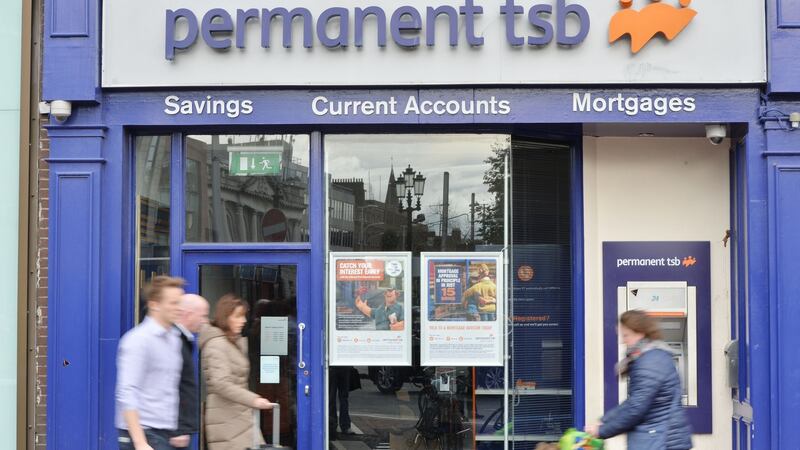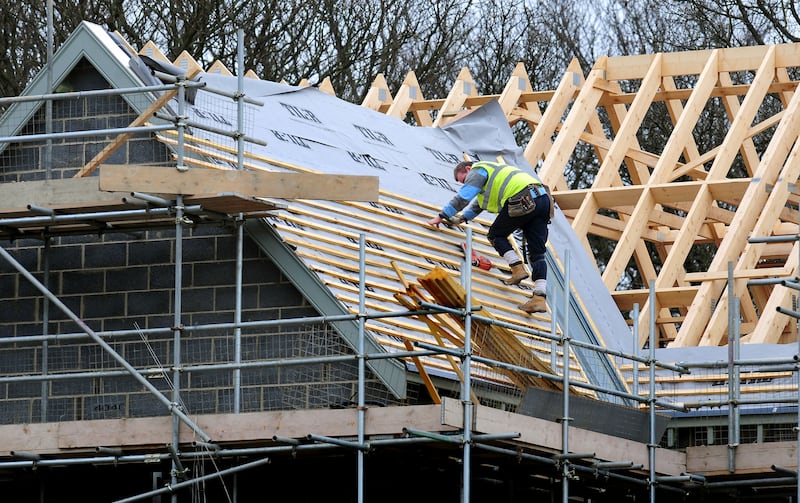There’s no avoiding the fact that it’s now more expensive to buy your first home than it was this time last year. Yes, property prices continue to rise, albeit at a more muted pace, with price growth of 7.8 per cent reported in the year to December – a deceleration from the 15 per cent reported earlier in 2022.
But it’s not just about property prices; the cost of funding a home has also increased, due to a number of sharp interest rate rises over the past year.
This means that monthly repayments on a mortgage of €320,000 have risen from about €1,264 last year (based on a rate of 2.5 per cent) to about €1,437 this year (based on rate of 3.5 per cent), an increase of about €170 a month.
So what do you need to know about funding a new home this year?
READ MORE
Mortgage rules
With interest rate increases tightening the housing market, the Central Bank made its first move to loosen its mortgage-lending rules in quite some time towards the end of last year.
For first time buyers (FTBs), the changes mean that as of January 1st of this year, they will be able to borrow four times their salary, instead of 3.5 times, as was the case previously (unless an exception to the rules was granted). A minimum 10 per cent deposit is also needed.
[ New homes to buy in Kildare: A-rated homes within easy reachOpens in new window ]
But what does this mean?
Well, last year a person/couple on income of €80,000 could borrow €280,000, which, with a deposit of €31,111, would fund a house worth €311,111.
This year, that same applicant will be able to borrow €320,000, which, with a deposit of €35,555, will fund a home selling for €355,555.
People are paying rent and saving so hard, so their mortgage payments [even if they have increased] are often lower, or very comparable to what they’re paying in rent or savings
— Trevor Grant, Affinity Advisors
So all of a sudden, a FTB’s budget may have increased by 14 per cent; of course borrowing more also means that repayments will be higher, and as we will see below, interest rate hikes may impinge on borrowing ability. It may also mean greater competition for certain properties.
And not everyone will qualify for the new four-times-income rule.
Trevor Grant, a director with Affinity Advisors, says getting a mortgage of four times your income is “not quite that straightforward”.
This is because some lenders will apply a minimum net income to those seeking four times income – of about €40,000 or so – so if you don’t meet this, you won’t get the maximum amount.
On the other hand, it may be easier to get an exception, which could see you borrow as much as 4.5-times income, as applications for these arrangements appear to have fallen sharply.
“The four-times-income rule seems to have taken that demand away,” says Grant.
Mortgage market
Funding is readily available, but there is a smaller pool of those supplying it. KBC and Ulster Bank have both exited the market, while rising interest rates have made non-bank lenders such as Finance Ireland and ICS less competitive.
This largely leaves AIB (including Haven and EBS), Bank of Ireland, Permanent TSB and Avant Money as the main players in the mortgage market, although Grant expects the non-bank lenders to come back to the market over the coming months.

As mentioned, rising interest rates may mean that you may not qualify for as large a mortgage as you may have done last year, as banks will typically stress test your application at rates of about 2 per cent more than the rate you’re locking into.
“The main thing to note is that given rising interest rates, proving repayment ability has increased significantly,” says Joey Sheehan of MyMortgages.ie, adding “if you’re think you’re saving enough, save more”.
So, FTBs now need more money left over each month to demonstrate proven repayment capacity.
But many FTBs will still comfortably meet the tougher criteria.
Indeed, for Grant, the rising cost of borrowing is not having too big an impact on the market – or at least not as of yet.
“People are paying rent and saving so hard, so their mortgage payments [even if they have increased] are often lower, or very comparable to what they’re paying in rent or savings,” he says. “There is still a very strong cohort of FTBs out there looking to buy.”
Some lenders will offer a cashback on your mortgage – Bank of Ireland offers up to 3 per cent; PTSB 2 per cent; EBS up to 3 per cent; and Haven, a €5,000 payment.
Remember, however, that depending on the rate you lock into, this may cost you more, as you may be paying a higher interest rate.
[ New homes to buy in Cork: City, suburban and coastal homes to suit all tastesOpens in new window ]
On the other hand, as an FTB, you might value an immediate cash influx today more than any future benefit.
In addition to funding a new home purchase themselves, FTBs can also consider a number of Government-backed schemes.
Government schemes
First Home Scheme
The aim of this scheme is to bridge the gap between their mortgage and deposit and the price of a new home as part of the Government’s Housing for All strategy. Through it, the State takes an equity share, of up to 30 per cent, in the purchase of a new home.
If a buyer only has to borrow 70 per cent of the purchase price, they should be able to buy a home they otherwise couldn’t afford, so the thinking goes.
“It’s giving people a significant shot in the arm in terms of purchasing power,” says Grant, noting increased interest in the scheme.
Consider a FTB on a salary of €45,000. They’re looking to buy a new home valued at €250,000, but can only borrow €180,000, given Central Bank rules. This leaves a shortfall of €45,000, once a deposit of €25,000 is factored in. This shortfall can be covered by the First Home scheme.
While the State’s stake does not have to be repaid, if it isn’t, applicants will have to start paying fees on it from year six. The State’s stake is a percentage of the value of the property, so it moves in the same direction as property prices. This means after six years, you could owe more – or less – than the initial value.
It is recommended that you seek independent advice if you’re considering the First Home scheme, due to the various permutations of the scheme.
The scheme has recently been enhanced with the aim of allowing more FTBs to qualify. This means that houses eligible for the scheme can now be valued at up to €475,000 (depending on location), with apartments at up to €500,000. To see what limit applies in your area, check here: https://www.firsthomescheme.ie/about/property-price-ceilings/
Figures show that some 750 applicants have been approved for the scheme to date, but drawing down a loan under the scheme might be more challenging, as a lack of supply of new homes – particularly apartments – may mean that there isn’t an abundance of properties to choose from.

For example, while an apartment valued at up to €500,000 in Dún Laoghaire will qualify for the scheme, it’s not easy to find such a property on the new-home market.
The scheme has also been criticised as offering an incentive towards developers to keep prices at a certain elevated level.
Help to Buy
FTBs of new homes can also consider applying for the Help to Buy scheme, which offers 10 per cent of the purchase price of the property back, up to a maximum of €30,000. It was recently extended until the end of 2024. Homes valued at €500,000 or over don’t qualify for the scheme.
It can also be used in conjunction with the aforementioned First Homes Scheme; if it is, then the maximum equity stake you can apply for is 20 per cent of the purchase price. If you avail of the scheme, you must also live in the property for five years, to avoid any clawbacks.
Local authority home loan
Another funding option for FTBs is the Local authority home loan (LAHL), which is aimed at assisting those who might be closed out of the traditional lending market.
The loan, which can be used to buy a new, second hand or self-build home, allows FTBs to borrow up to 90 per cent of the purchase price of a property with the option of two fixed rates: 3.35 per cent fixed for up to 25 years (APR 3.40 per cent); or 3.45 per cent fixed for up to 30 years (APR 3.51 per cent).
These rates have increased since the scheme was first launched, but don’t look unattractive in the current lending environment – of course it’s hard to tell what the overall outcome will be over the life of the loan.
The loan used to come with an expensive mortgage protection product, but this has now been replaced by a simpler product, which should make repayments more affordable, and the product more appealing.
House price and income limits have also increased: from March 1st, 2023, the price of a home that is eligible for the loan increased from €320,000 to €360,000 across Dublin, Wicklow and Kildare; from €310,00 to €330,000 in Galway city, Cork city, Louth, Meath, Co Galway and Co Cork; from €250,000 to €300,000 in Limerick, Waterford, Clare, Wexford, Westmeath and Kilkenny; and from €250,000 to €275,000 in the remaining counties.
Moreover, the limit has increased from €50,000 or €65,000, depending on location, to €70,000 for all single applicants, and to €85,000 for joint applicants.












